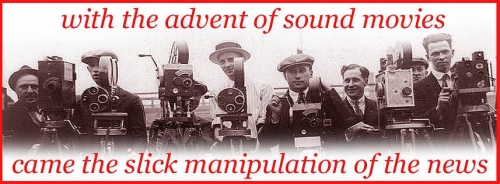Twenty-three years after Harold Ross (1892 – 1951) launched The New Yorker, this profile of the man appeared on the newsstands:
"Ross is a kind of impostor. The New Yorker is urbane; cactus is more urbane than Ross. The New Yorker carries understatement almost to the point of inaudibility; with Ross the expletive crowds out most of the eight parts of speech....It is true that he never had a high school education; but it is also true that he is a master grammarian, and that the superb sense of style which informs The New Yorker flows in part from his clean, uncompromising feeling for the English language."
Click here to read the second half of the Harold Ross profile. This portion is decorated with rejected cartoons from The New Yorker ...
Ross never forgot his days in Paris as the editor of The Stars & Stars, click here to read an article about that period in his life. This is the second and final installment of the Harold Ross profile posted above. Inasmuch as OldMagazineArticles.com is devoted to archiving the articles from the olde Yank, we are also keen on posting article about the magazine and its editorial policies, for few periodicals said as much about that generation and their lot in the Forties better than Yank. Attached is a photo essay from Coronet Magazine, illustrated with some 23 images, that tell the tale of how that weekly operated.
When W.W. II came to a close Yank Magazine was no more, this article was written -
 |
In 1942 a couple of veterans from the first go-round of
The Stars & Stripes (February 8, 1918, through June 13, 1919) visited the New York offices of Yank Magazine, after having read many of their first issues. Although wars had changed, the Army had changed soldier-journalism had changed in 24 years, the old men were impressed with Yank and had to reluctantly admit it.
"[Yank has] profited by all our old mistakes, made some gorgeous ones of their own, and profited by them - and have the guts to admit it! Which means the fighting-writing America of 1942 has actually progressed 24 years over the fighting-writing America of 1918." "The Enemy, according to the underground press, is 'The Establishment' - an amorphous term used by young radicals to mean parents, teachers, school administrators, the House Committee on Un-American Activities, the Pentagon, CIA, the media, government bureaucrats, the narcotics squad, businessmen, and the FBI. The favorite hate symbol within this curious Establishment is the policeman - according to the mythology of the Left, a brutal enforcer of the capitalist status quo and oppressor of youth."
"The revolution in America today supports about a dozen main propaganda organs. Chief among them is The Daily Worker it makes no pretense at impartiality. It is a revolutionary [newspaper] and nothing else, frankly admitted at every turn. For the genuine Red no such thing as an impartial newspaper exists... No one gets paid very much in the Red press. Salaries of twenty or twenty-five dollars a week are the maximum. One reason is political, we are told. Revolutionaries do not believe in high salaries.
In 1887 the The New York Times reviewed the first English edition of Das Kapital by Karl Marx, click here to read it...
Click here to read more about the American communists of the 1930s.
|